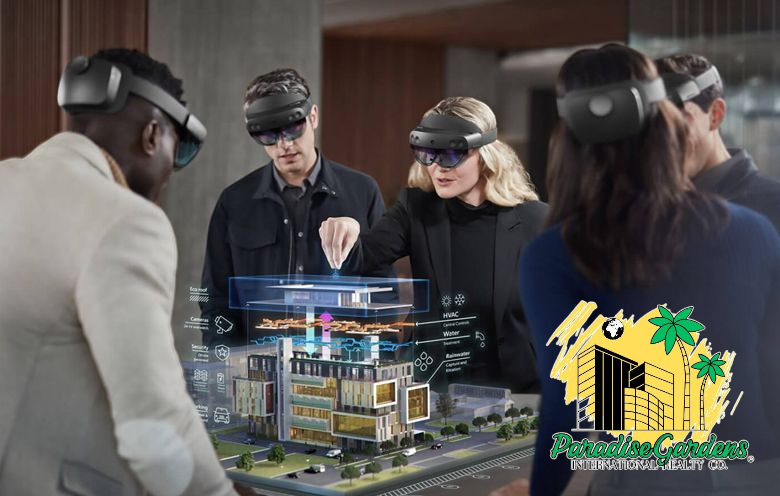
Virtual Reality (VR) has rapidly evolved from a futuristic novelty into a transformative tool across many industries—none more visibly than real estate. What once required clients to drive across town or fly across the country can now be experienced in high definition from the comfort of their home. VR technology is reshaping how agents sell properties and how buyers experience them.
At the core of VR’s impact is the immersive 3D tour. Traditional photography and video walk-throughs can only convey so much. Virtual reality allows potential buyers to “walk” through properties in real-time, exploring every corner, opening doors, and even examining finishes on countertops. This level of interaction builds a stronger emotional connection to the property than static images ever could.
For real estate agents, VR is a powerful selling tool that saves time and expands their client base. Agents can show more properties virtually in less time, filtering serious buyers from casual browsers. Out-of-town clients can now tour multiple homes in a single afternoon without ever leaving their city. That kind of efficiency was unheard of a decade ago.
Developers are also embracing VR, particularly for pre-construction and off-plan properties. Using architectural renderings and 3D modeling, agents can offer full virtual walk-throughs of homes that don’t physically exist yet. Buyers can view layout options, design finishes, and even lighting scenarios—all long before the first brick is laid. This has significantly increased pre-sales and early investment interest.
The benefits extend to international and luxury markets. High-net-worth buyers are often short on time but big on expectations. Virtual tours allow them to explore properties around the world on their own schedule. For overseas investors or relocating professionals, VR removes the barrier of distance and empowers confident decision-making.
Beyond buyers, sellers too are seeing the advantage. Listings with VR tours tend to stand out more online, receive higher engagement, and sell faster. According to several industry surveys, homes listed with virtual tours can sell up to 20% faster and for more money. The immersive element allows buyers to feel more committed earlier in the process.
One of the most exciting developments is the integration of virtual staging. Empty homes often struggle to appeal to prospective buyers, but physically staging a property can be costly. With VR, realtors can digitally furnish a space in different styles based on the buyer’s preferences—modern, farmhouse, minimalist—giving them a customized vision of what their future home could look like.




For real estate companies and independent agents, adopting VR doesn’t require Hollywood-level budgets. Affordable VR platforms like Matterport, Kuula, or EyeSpy360 offer user-friendly tools to capture and upload tours using a 360-degree camera. Some agents even outsource these services to VR specialists for one-time fees per listing—making it accessible for solo agents and boutique firms alike.
VR also adds value in commercial real estate. Leasing office space, showcasing retail environments, or walking through a potential restaurant location becomes easier and more engaging when the client can explore every inch virtually. Investors get a full sense of space and layout, which reduces doubt and speeds up leasing or purchase decisions.
With the help of augmented reality (AR) integration, realtors can now offer mixed experiences where VR meets interactivity. Imagine pointing your phone at a physical empty lot and seeing a full-scale digital building rise before your eyes, complete with interiors. This mixed-use technology helps clients visualize outcomes and get excited about future potential.
There are also benefits for agents’ workflows. Virtual tours minimize time spent coordinating in-person showings, especially for properties still under renovation or in high-demand areas. Agents can qualify leads more effectively, reduce unnecessary travel, and maximize their productivity while still offering top-tier service.
However, embracing VR in real estate does require a mindset shift. Agents must become comfortable with tech tools and new workflows. Training and marketing strategies need to adapt to showcase virtual tours effectively on websites, social platforms, and listings. But the return on investment is well worth the adjustment.
As consumer expectations evolve, VR is not just a nice-to-have—it’s becoming a necessity. Buyers now expect more transparency, more access, and more convenience. Virtual reality meets all three demands, making it a winning innovation for the modern real estate industry.
Ultimately, the rise of virtual reality in real estate isn’t just about flashy tech. It’s about empowering clients, boosting efficiency, and creating a deeper, more emotional connection between people and properties—without ever stepping foot on the premises. For entrepreneurs in real estate, it’s a trend worth not only watching—but adopting.


Add comment
Comments